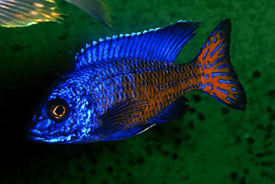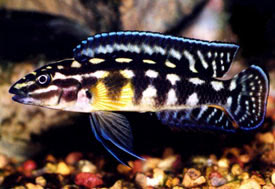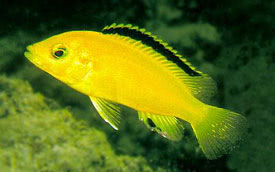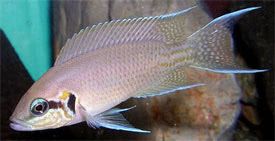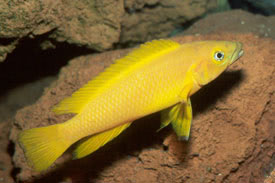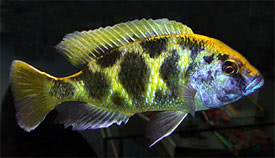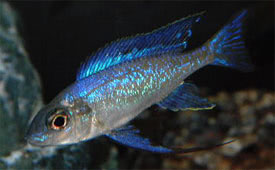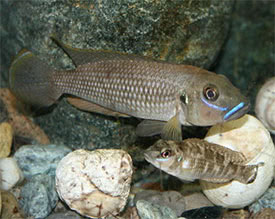
 Magyarul / Hungarian
Magyarul / Hungarian

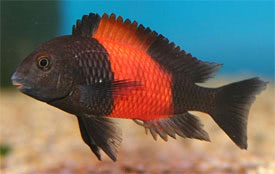
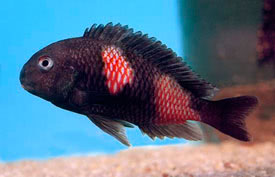
- Scientific name: Tropheus sp. 'black'
- Common name: Moorii, Blunt-headed cichlid
- Group: Cichlids
- Habitat: Eastern Africa, Lake Tanganyika
- Size: 10-12 cm.
- Biotope: Lives at a depth of 6.5-10 feet (2-3 m) along the rocky shores of Lake Tanganyika.
- Social behavior: A territorial fish, intolerant of its own species.
- Diet: Algae and should be fed a high-fiber diet
- Breeding: Quite easy
- Tank: Minimum 500 litres
- Population: 30-35 fish for 650 litres
- Decoration: Use a set-up with rock formations that reach the surface of the water. Included should be many hiding places including caves, crevices, over-hangs, and tunnels.
- Temperature: 25-26°C
- pH: 8-9,5
- Hardness: 8-25 NK°
- Lifespan: 8-10 years
Description: For the first look the population data might be shocking, but many Tropheus breeder agree, that this is the perfect combination, because in this situation the agression between the fish is minimal. Of course it is possible to keep 1 male with 2-3 females, or a group of 10-15 fish, but in the long run this might be the best.
A high-backed, laterally compressed cichlid with a fan-shaped caudal fin. The steep forehead gives way to a protruding upper lip and an undershot mouth. The color depends entirely on the geographic population from where the fish is found. The common or "original strain" has a dark olive to black body color with a yellow and/or red band that marks the mid-section of the fish. This band widens at the upper part and lower part of the body. Right above this marking, the section of the dorsal fin is red.
Females may have darker colors and attain a larger size. The genital papilla of the male is slender and comes to a point.
Suggest using a Tropheus community tank with water having values between the perimeters mentioned above. The temperature should be 81-86°F (27-30°C). The fish, once established, may spawn frequently dropping 5-16 eggs in open water. The female quickly takes the eggs into her mouth. After collecting the eggs, she swims to the genital area of the male where the eggs are fertilized. The eggs are large, to 0.3" (0.8 cm) in diameter, and are incubated for a period of 3-4 weeks. The female continues to feed while caring the eggs, which may explain the loss of brood often experienced by some keepers. The fry emerge free-swimming and measuring up to 0.7" (1.8 cm). The female continues her care of the fry for a week further. The young are hardy and fast-growing when fed on a diet of Artemia nauplii, Cyclops nauplii, and fine dry foods.



